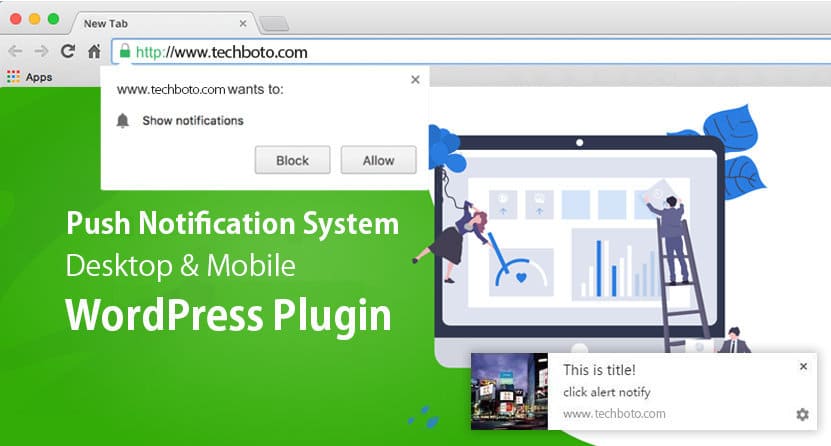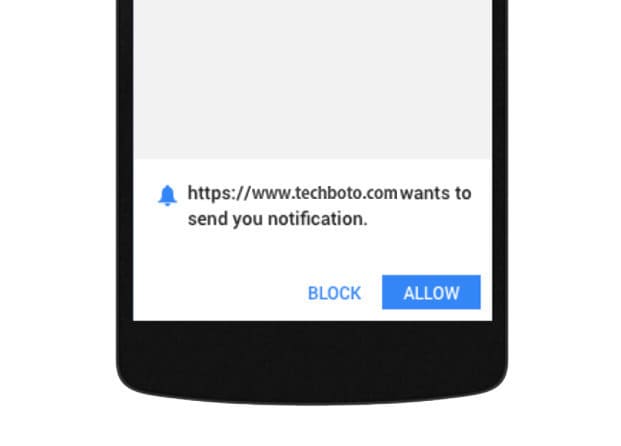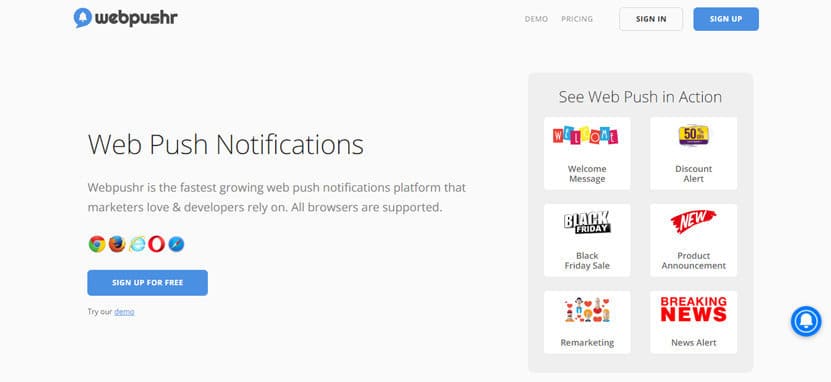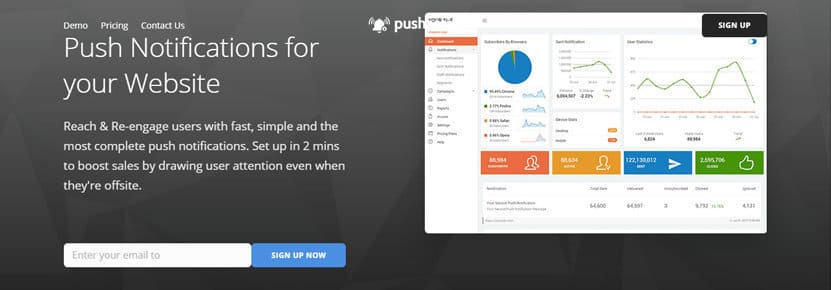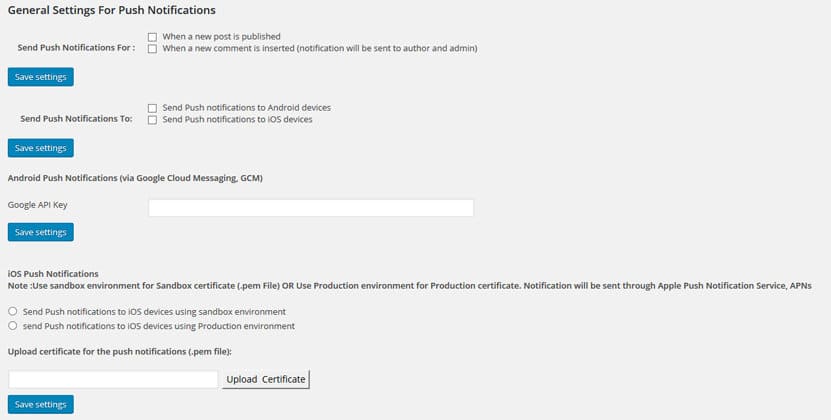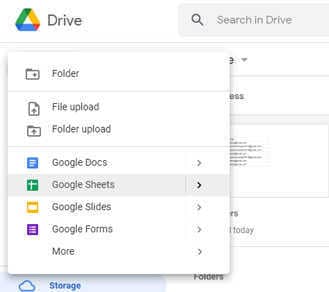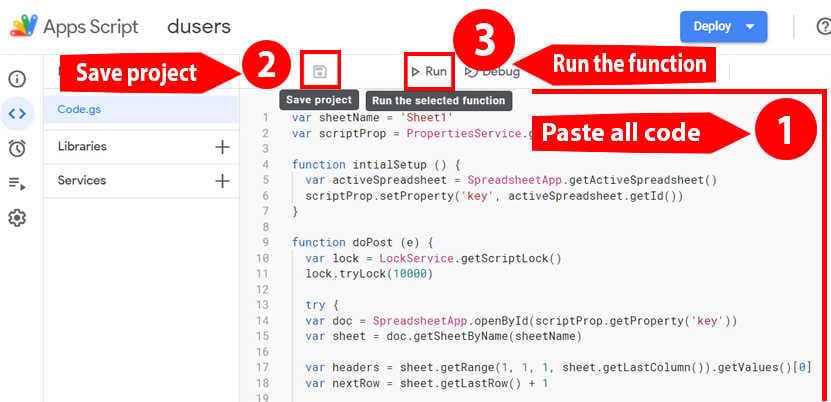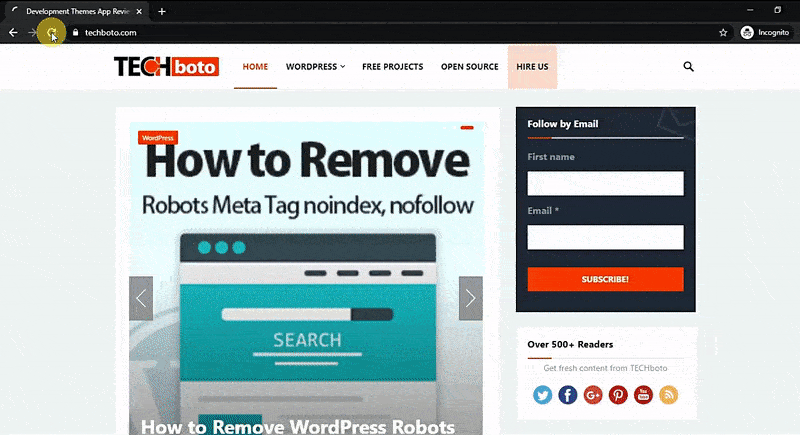If you’re looking to achieve fast page loading for WordPress pages without refreshing using jQuery AJAX, and you prefer not to use plugins, you’re in luck. I will provide you with all the necessary details on how to implement this feature in WordPress. By simply copying and pasting the provided code into the correct location, your website will load quickly, whether it’s hosted on a server or running locally on your computer.
The optimal approach in this case is to create a post and publish it, as it will automatically work on all website pages and the navigation menu. Whenever you encounter a loader animation after performing an action on the page, it indicates that a jQuery AJAX request is being sent to the server, which affects the loading time.
In this comprehensive article, I will guide you through the step-by-step process of creating and managing jQuery AJAX loading for WordPress pages and post pages. By implementing a simple code snippet and file, you will enable seamless loading without the need to refresh your website. This feature will greatly enhance the user experience for your readers.
Step 1: Getting Started
To begin, navigate to the following directory: wp-content -> themes -> Your Theme Name. Inside your theme’s folder, create a new folder with any desired name (e.g., “loader_boom”). This folder will be used to store the necessary files for implementing the loader functionality.
Next, create a file named “ajax_loads.js”. This JavaScript file will be responsible for handling the AJAX loading functionality on your WordPress site.
(function(window,undefined){ var History = window.History, $ = window.jQuery, document = window.document; if ( !History.enabled ) return false; $(function(){ var rootUrl = reload_helper['rootUrl'], contentSelector = '#' + reload_helper['container_id'], $content = $(contentSelector), contentNode = $content.get(0), $body = $(document.body), scrollOptions = { duration: 800, easing:'swing' }; if ( $content.length === 0 ) $content = $body; $.expr[':'].internal = function(obj, index, meta, stack){ var $this = $(obj), url = $this.attr('href')||'', isInternalLink; isInternalLink = url.substring(0,rootUrl.length) === rootUrl || url.indexOf(':') === -1; return isInternalLink; }; var documentHtml = function(html){ var result = String(html).replace(/<\!DOCTYPE[^>]*>/i, '') .replace(/<(html|head|body|title|script)([\s\>])/gi,'<div id="document-$1"$2') .replace(/<\/(html|head|body|title|script)\>/gi,'</div>'); return result; }; $.fn.wp_reload = function(){ var $this = $(this); $this.find('a:internal:not(.no-ajaxy,[href^="#"],[href*="wp-login"],[href*="wp-admin"])').on('click', function(event){ var $this = $(this), url = $this.attr('href'), title = $this.attr('title') || null; if ( event.which == 2 || event.metaKey ) return true; History.pushState(null,title,url); event.preventDefault(); return false; }); return $this; }; $body.wp_reload(); $(window).bind('statechange',function(){ var State = History.getState(), url = State.url, relativeUrl = url.replace(rootUrl,''); $.ajax({ url: url, success: function(data, textStatus, jqXHR){ var $data = $(documentHtml(data)), $dataBody = $data.find('#document-body:first ' + contentSelector), bodyClasses = $data.find('#document-body:first').attr('class'), contentHtml, $scripts; var $menu_list = $data.find('.' + reload_helper['mcdc']); jQuery('body').attr('class', bodyClasses); $scripts = $dataBody.find('#document-script'); if ( $scripts.length ) $scripts.detach(); contentHtml = $dataBody.html()||$data.html(); if ( !contentHtml ) { document.location.href = url; return false; } $content.stop(true,true); $content.html(contentHtml) .wp_reload() .css('text-align', '') .animate({opacity: 1, visibility: "visible"}); if ( '' != reload_helper['scrollTop'] ) { jQuery('html, body').animate({ scrollTop: jQuery(contentSelector).offset().top }, 1000); } $('.' + reload_helper['mcdc']).html($menu_list.html()); $body.wp_reload(); $(reload_helper['ids']).each(function(){ jQuery(this).addClass('no-ajaxy'); }); document.title = $data.find('#document-title:first').text(); try { document.getElementsByTagName('title')[0].innerHTML = document.title.replace('<','<') .replace('>','>') .replace(' & ',' & '); } catch ( Exception ) { } $scripts.each(function(){ var scriptText = $(this).html(); if ( '' != scriptText ) { scriptNode = document.createElement('script'); scriptNode.appendChild(document.createTextNode(scriptText)); contentNode.appendChild(scriptNode); } else { $.getScript( $(this).attr('src') ); } }); if ( typeof window.pageTracker !== 'undefined' ) window.pageTracker._trackPageview(relativeUrl); if ( typeof window.reinvigorate !== 'undefined' && typeof window.reinvigorate.ajax_track !== 'undefined' ) reinvigorate.ajax_track(url); }, error: function(jqXHR, textStatus, errorThrown){ document.location.href = url; return false; } }); }); }); })(window);
Step 2: Creating an Additional File named “ajax_history.js”
In addition to the “ajax_loads.js” file, create another file called “ajax_history.js”. This JavaScript file will be utilized to manage the history of AJAX requests on your WordPress site.
window.JSON||(window.JSON={}),function(){function f(a){return a<10?"0"+a:a}function quote(a){return escapable.lastIndex=0,escapable.test(a)?'"'+a.replace(escapable,function(a){var b=meta[a];return typeof b=="string"?b:"\\u"+("0000"+a.charCodeAt(0).toString(16)).slice(-4)})+'"':'"'+a+'"'}function str(a,b){var c,d,e,f,g=gap,h,i=b[a];i&&typeof i=="object"&&typeof i.toJSON=="function"&&(i=i.toJSON(a)),typeof rep=="function"&&(i=rep.call(b,a,i));switch(typeof i){case"string":return quote(i);case"number":return isFinite(i)?String(i):"null";case"boolean":case"null":return String(i);case"object":if(!i)return"null";gap+=indent,h=[];if(Object.prototype.toString.apply(i)==="[object Array]"){f=i.length;for(c=0;c<f;c+=1)h[c]=str(c,i)||"null";return e=h.length===0?"[]":gap?"[\n"+gap+h.join(",\n"+gap)+"\n"+g+"]":"["+h.join(",")+"]",gap=g,e}if(rep&&typeof rep=="object"){f=rep.length;for(c=0;c<f;c+=1)d=rep[c],typeof d=="string"&&(e=str(d,i),e&&h.push(quote(d)+(gap?": ":":")+e))}else for(d in i)Object.hasOwnProperty.call(i,d)&&(e=str(d,i),e&&h.push(quote(d)+(gap?": ":":")+e));return e=h.length===0?"{}":gap?"{\n"+gap+h.join(",\n"+gap)+"\n"+g+"}":"{"+h.join(",")+"}",gap=g,e}}"use strict",typeof Date.prototype.toJSON!="function"&&(Date.prototype.toJSON=function(a){return isFinite(this.valueOf())?this.getUTCFullYear()+"-"+f(this.getUTCMonth()+1)+"-"+f(this.getUTCDate())+"T"+f(this.getUTCHours())+":"+f(this.getUTCMinutes())+":"+f(this.getUTCSeconds())+"Z":null},String.prototype.toJSON=Number.prototype.toJSON=Boolean.prototype.toJSON=function(a){return this.valueOf()});var JSON=window.JSON,cx=/[\u0000\u00ad\u0600-\u0604\u070f\u17b4\u17b5\u200c-\u200f\u2028-\u202f\u2060-\u206f\ufeff\ufff0-\uffff]/g,escapable=/[\\\"\x00-\x1f\x7f-\x9f\u00ad\u0600-\u0604\u070f\u17b4\u17b5\u200c-\u200f\u2028-\u202f\u2060-\u206f\ufeff\ufff0-\uffff]/g,gap,indent,meta={"\b":"\\b","\t":"\\t","\n":"\\n","\f":"\\f","\r":"\\r",'"':'\\"',"\\":"\\\\"},rep;typeof JSON.stringify!="function"&&(JSON.stringify=function(a,b,c){var d;gap="",indent="";if(typeof c=="number")for(d=0;d<c;d+=1)indent+=" ";else typeof c=="string"&&(indent=c);rep=b;if(!b||typeof b=="function"||typeof b=="object"&&typeof b.length=="number")return str("",{"":a});throw new Error("JSON.stringify")}),typeof JSON.parse!="function"&&(JSON.parse=function(text,reviver){function walk(a,b){var c,d,e=a[b];if(e&&typeof e=="object")for(c in e)Object.hasOwnProperty.call(e,c)&&(d=walk(e,c),d!==undefined?e[c]=d:delete e[c]);return reviver.call(a,b,e)}var j;text=String(text),cx.lastIndex=0,cx.test(text)&&(text=text.replace(cx,function(a){return"\\u"+("0000"+a.charCodeAt(0).toString(16)).slice(-4)}));if(/^[\],:{}\s]*$/.test(text.replace(/\\(?:["\\\/bfnrt]|u[0-9a-fA-F]{4})/g,"@").replace(/"[^"\\\n\r]*"|true|false|null|-?\d+(?:\.\d*)?(?:[eE][+\-]?\d+)?/g,"]").replace(/(?:^|:|,)(?:\s*\[)+/g,"")))return j=eval("("+text+")"),typeof reviver=="function"?walk({"":j},""):j;throw new SyntaxError("JSON.parse")})}(),function(a,b){"use strict";var c=a.History=a.History||{},d=a.jQuery;if(typeof c.Adapter!="undefined")throw new Error("History.js Adapter has already been loaded...");c.Adapter={bind:function(a,b,c){d(a).bind(b,c)},trigger:function(a,b,c){d(a).trigger(b,c)},extractEventData:function(a,c,d){var e=c&&c.originalEvent&&c.originalEvent[a]||d&&d[a]||b;return e},onDomLoad:function(a){d(a)}},typeof c.init!="undefined"&&c.init()}(window),function(a,b){"use strict";var c=a.document,d=a.setTimeout||d,e=a.clearTimeout||e,f=a.setInterval||f,g=a.History=a.History||{};if(typeof g.initHtml4!="undefined")throw new Error("History.js HTML4 Support has already been loaded...");g.initHtml4=function(){if(typeof g.initHtml4.initialized!="undefined")return!1;g.initHtml4.initialized=!0,g.enabled=!0,g.savedHashes=[],g.isLastHash=function(a){var b=g.getHashByIndex(),c;return c=a===b,c},g.saveHash=function(a){return g.isLastHash(a)?!1:(g.savedHashes.push(a),!0)},g.getHashByIndex=function(a){var b=null;return typeof a=="undefined"?b=g.savedHashes[g.savedHashes.length-1]:a<0?b=g.savedHashes[g.savedHashes.length+a]:b=g.savedHashes[a],b},g.discardedHashes={},g.discardedStates={},g.discardState=function(a,b,c){var d=g.getHashByState(a),e;return e={discardedState:a,backState:c,forwardState:b},g.discardedStates[d]=e,!0},g.discardHash=function(a,b,c){var d={discardedHash:a,backState:c,forwardState:b};return g.discardedHashes[a]=d,!0},g.discardedState=function(a){var b=g.getHashByState(a),c;return c=g.discardedStates[b]||!1,c},g.discardedHash=function(a){var b=g.discardedHashes[a]||!1;return b},g.recycleState=function(a){var b=g.getHashByState(a);return g.discardedState(a)&&delete g.discardedStates[b],!0},g.emulated.hashChange&&(g.hashChangeInit=function(){g.checkerFunction=null;var b="",d,e,h,i;return g.isInternetExplorer()?(d="historyjs-iframe",e=c.createElement("iframe"),e.setAttribute("id",d),e.style.display="none",c.body.appendChild(e),e.contentWindow.document.open(),e.contentWindow.document.close(),h="",i=!1,g.checkerFunction=function(){if(i)return!1;i=!0;var c=g.getHash()||"",d=g.unescapeHash(e.contentWindow.document.location.hash)||"";return c!==b?(b=c,d!==c&&(h=d=c,e.contentWindow.document.open(),e.contentWindow.document.close(),e.contentWindow.document.location.hash=g.escapeHash(c)),g.Adapter.trigger(a,"hashchange")):d!==h&&(h=d,g.setHash(d,!1)),i=!1,!0}):g.checkerFunction=function(){var c=g.getHash();return c!==b&&(b=c,g.Adapter.trigger(a,"hashchange")),!0},g.intervalList.push(f(g.checkerFunction,g.options.hashChangeInterval)),!0},g.Adapter.onDomLoad(g.hashChangeInit)),g.emulated.pushState&&(g.onHashChange=function(b){var d=b&&b.newURL||c.location.href,e=g.getHashByUrl(d),f=null,h=null,i=null,j;return g.isLastHash(e)?(g.busy(!1),!1):(g.doubleCheckComplete(),g.saveHash(e),e&&g.isTraditionalAnchor(e)?(g.Adapter.trigger(a,"anchorchange"),g.busy(!1),!1):(f=g.extractState(g.getFullUrl(e||c.location.href,!1),!0),g.isLastSavedState(f)?(g.busy(!1),!1):(h=g.getHashByState(f),j=g.discardedState(f),j?(g.getHashByIndex(-2)===g.getHashByState(j.forwardState)?g.back(!1):g.forward(!1),!1):(g.pushState(f.data,f.title,f.url,!1),!0))))},g.Adapter.bind(a,"hashchange",g.onHashChange),g.pushState=function(b,d,e,f){if(g.getHashByUrl(e))throw new Error("History.js does not support states with fragement-identifiers (hashes/anchors).");if(f!==!1&&g.busy())return g.pushQueue({scope:g,callback:g.pushState,args:arguments,queue:f}),!1;g.busy(!0);var h=g.createStateObject(b,d,e),i=g.getHashByState(h),j=g.getState(!1),k=g.getHashByState(j),l=g.getHash();return g.storeState(h),g.expectedStateId=h.id,g.recycleState(h),g.setTitle(h),i===k?(g.busy(!1),!1):i!==l&&i!==g.getShortUrl(c.location.href)?(g.setHash(i,!1),!1):(g.saveState(h),g.Adapter.trigger(a,"statechange"),g.busy(!1),!0)},g.replaceState=function(a,b,c,d){if(g.getHashByUrl(c))throw new Error("History.js does not support states with fragement-identifiers (hashes/anchors).");if(d!==!1&&g.busy())return g.pushQueue({scope:g,callback:g.replaceState,args:arguments,queue:d}),!1;g.busy(!0);var e=g.createStateObject(a,b,c),f=g.getState(!1),h=g.getStateByIndex(-2);return g.discardState(f,e,h),g.pushState(e.data,e.title,e.url,!1),!0}),g.emulated.pushState&&g.getHash()&&!g.emulated.hashChange&&g.Adapter.onDomLoad(function(){g.Adapter.trigger(a,"hashchange")})},typeof g.init!="undefined"&&g.init()}(window),function(a,b){"use strict";var c=a.console||b,d=a.document,e=a.navigator,f=a.sessionStorage||!1,g=a.setTimeout,h=a.clearTimeout,i=a.setInterval,j=a.clearInterval,k=a.JSON,l=a.alert,m=a.History=a.History||{},n=a.history;k.stringify=k.stringify||k.encode,k.parse=k.parse||k.decode;if(typeof m.init!="undefined")throw new Error("History.js Core has already been loaded...");m.init=function(){return typeof m.Adapter=="undefined"?!1:(typeof m.initCore!="undefined"&&m.initCore(),typeof m.initHtml4!="undefined"&&m.initHtml4(),!0)},m.initCore=function(){if(typeof m.initCore.initialized!="undefined")return!1;m.initCore.initialized=!0,m.options=m.options||{},m.options.hashChangeInterval=m.options.hashChangeInterval||100,m.options.safariPollInterval=m.options.safariPollInterval||500,m.options.doubleCheckInterval=m.options.doubleCheckInterval||500,m.options.storeInterval=m.options.storeInterval||1e3,m.options.busyDelay=m.options.busyDelay||250,m.options.debug=m.options.debug||!1,m.options.initialTitle=m.options.initialTitle||d.title,m.intervalList=[],m.clearAllIntervals=function(){var a,b=m.intervalList;if(typeof b!="undefined"&&b!==null){for(a=0;a<b.length;a++)j(b[a]);m.intervalList=null}},m.debug=function(){(m.options.debug||!1)&&m.log.apply(m,arguments)},m.log=function(){var a=typeof c!="undefined"&&typeof c.log!="undefined"&&typeof c.log.apply!="undefined",b=d.getElementById("log"),e,f,g,h,i;a?(h=Array.prototype.slice.call(arguments),e=h.shift(),typeof c.debug!="undefined"?c.debug.apply(c,[e,h]):c.log.apply(c,[e,h])):e="\n"+arguments[0]+"\n";for(f=1,g=arguments.length;f<g;++f){i=arguments[f];if(typeof i=="object"&&typeof k!="undefined")try{i=k.stringify(i)}catch(j){}e+="\n"+i+"\n"}return b?(b.value+=e+"\n-----\n",b.scrollTop=b.scrollHeight-b.clientHeight):a||l(e),!0},m.getInternetExplorerMajorVersion=function(){var a=m.getInternetExplorerMajorVersion.cached=typeof m.getInternetExplorerMajorVersion.cached!="undefined"?m.getInternetExplorerMajorVersion.cached:function(){var a=3,b=d.createElement("div"),c=b.getElementsByTagName("i");while((b.innerHTML="<!--[if gt IE "+ ++a+"]><i></i><![endif]-->")&&c[0]);return a>4?a:!1}();return a},m.isInternetExplorer=function(){var a=m.isInternetExplorer.cached=typeof m.isInternetExplorer.cached!="undefined"?m.isInternetExplorer.cached:Boolean(m.getInternetExplorerMajorVersion());return a},m.emulated={pushState:!Boolean(a.history&&a.history.pushState&&a.history.replaceState&&!/ Mobile\/([1-7][a-z]|(8([abcde]|f(1[0-8]))))/i.test(e.userAgent)&&!/AppleWebKit\/5([0-2]|3[0-2])/i.test(e.userAgent)),hashChange:Boolean(!("onhashchange"in a||"onhashchange"in d)||m.isInternetExplorer()&&m.getInternetExplorerMajorVersion()<8)},m.enabled=!m.emulated.pushState,m.bugs={setHash:Boolean(!m.emulated.pushState&&e.vendor==="Apple Computer, Inc."&&/AppleWebKit\/5([0-2]|3[0-3])/.test(e.userAgent)),safariPoll:Boolean(!m.emulated.pushState&&e.vendor==="Apple Computer, Inc."&&/AppleWebKit\/5([0-2]|3[0-3])/.test(e.userAgent)),ieDoubleCheck:Boolean(m.isInternetExplorer()&&m.getInternetExplorerMajorVersion()<8),hashEscape:Boolean(m.isInternetExplorer()&&m.getInternetExplorerMajorVersion()<7)},m.isEmptyObject=function(a){for(var b in a)return!1;return!0},m.cloneObject=function(a){var b,c;return a?(b=k.stringify(a),c=k.parse(b)):c={},c},m.getRootUrl=function(){var a=d.location.protocol+"//"+(d.location.hostname||d.location.host);if(d.location.port||!1)a+=":"+d.location.port;return a+="/",a},m.getBaseHref=function(){var a=d.getElementsByTagName("base"),b=null,c="";return a.length===1&&(b=a[0],c=b.href.replace(/[^\/]+$/,"")),c=c.replace(/\/+$/,""),c&&(c+="/"),c},m.getBaseUrl=function(){var a=m.getBaseHref()||m.getBasePageUrl()||m.getRootUrl();return a},m.getPageUrl=function(){var a=m.getState(!1,!1),b=(a||{}).url||d.location.href,c;return c=b.replace(/\/+$/,"").replace(/[^\/]+$/,function(a,b,c){return/\./.test(a)?a:a+"/"}),c},m.getBasePageUrl=function(){var a=d.location.href.replace(/[#\?].*/,"").replace(/[^\/]+$/,function(a,b,c){return/[^\/]$/.test(a)?"":a}).replace(/\/+$/,"")+"/";return a},m.getFullUrl=function(a,b){var c=a,d=a.substring(0,1);return b=typeof b=="undefined"?!0:b,/[a-z]+\:\/\//.test(a)||(d==="/"?c=m.getRootUrl()+a.replace(/^\/+/,""):d==="#"?c=m.getPageUrl().replace(/#.*/,"")+a:d==="?"?c=m.getPageUrl().replace(/[\?#].*/,"")+a:b?c=m.getBaseUrl()+a.replace(/^(\.\/)+/,""):c=m.getBasePageUrl()+a.replace(/^(\.\/)+/,"")),c.replace(/\#$/,"")},m.getShortUrl=function(a){var b=a,c=m.getBaseUrl(),d=m.getRootUrl();return m.emulated.pushState&&(b=b.replace(c,"")),b=b.replace(d,"/"),m.isTraditionalAnchor(b)&&(b="./"+b),b=b.replace(/^(\.\/)+/g,"./").replace(/\#$/,""),b},m.store={},m.idToState=m.idToState||{},m.stateToId=m.stateToId||{},m.urlToId=m.urlToId||{},m.storedStates=m.storedStates||[],m.savedStates=m.savedStates||[],m.normalizeStore=function(){m.store.idToState=m.store.idToState||{},m.store.urlToId=m.store.urlToId||{},m.store.stateToId=m.store.stateToId||{}},m.getState=function(a,b){typeof a=="undefined"&&(a=!0),typeof b=="undefined"&&(b=!0);var c=m.getLastSavedState();return!c&&b&&(c=m.createStateObject()),a&&(c=m.cloneObject(c),c.url=c.cleanUrl||c.url),c},m.getIdByState=function(a){var b=m.extractId(a.url),c;if(!b){c=m.getStateString(a);if(typeof m.stateToId[c]!="undefined")b=m.stateToId[c];else if(typeof m.store.stateToId[c]!="undefined")b=m.store.stateToId[c];else{for(;;){b=(new Date).getTime()+String(Math.random()).replace(/\D/g,"");if(typeof m.idToState[b]=="undefined"&&typeof m.store.idToState[b]=="undefined")break}m.stateToId[c]=b,m.idToState[b]=a}}return b},m.normalizeState=function(a){var b,c;if(!a||typeof a!="object")a={};if(typeof a.normalized!="undefined")return a;if(!a.data||typeof a.data!="object")a.data={};b={},b.normalized=!0,b.title=a.title||"",b.url=m.getFullUrl(m.unescapeString(a.url||d.location.href)),b.hash=m.getShortUrl(b.url),b.data=m.cloneObject(a.data),b.id=m.getIdByState(b),b.cleanUrl=b.url.replace(/\??\&_suid.*/,""),b.url=b.cleanUrl,c=!m.isEmptyObject(b.data);if(b.title||c)b.hash=m.getShortUrl(b.url).replace(/\??\&_suid.*/,""),/\?/.test(b.hash)||(b.hash+="?"),b.hash+="&_suid="+b.id;return b.hashedUrl=m.getFullUrl(b.hash),(m.emulated.pushState||m.bugs.safariPoll)&&m.hasUrlDuplicate(b)&&(b.url=b.hashedUrl),b},m.createStateObject=function(a,b,c){var d={data:a,title:b,url:c};return d=m.normalizeState(d),d},m.getStateById=function(a){a=String(a);var c=m.idToState[a]||m.store.idToState[a]||b;return c},m.getStateString=function(a){var b,c,d;return b=m.normalizeState(a),c={data:b.data,title:a.title,url:a.url},d=k.stringify(c),d},m.getStateId=function(a){var b,c;return b=m.normalizeState(a),c=b.id,c},m.getHashByState=function(a){var b,c;return b=m.normalizeState(a),c=b.hash,c},m.extractId=function(a){var b,c,d;return c=/(.*)\&_suid=([0-9]+)$/.exec(a),d=c?c[1]||a:a,b=c?String(c[2]||""):"",b||!1},m.isTraditionalAnchor=function(a){var b=!/[\/\?\.]/.test(a);return b},m.extractState=function(a,b){var c=null,d,e;return b=b||!1,d=m.extractId(a),d&&(c=m.getStateById(d)),c||(e=m.getFullUrl(a),d=m.getIdByUrl(e)||!1,d&&(c=m.getStateById(d)),!c&&b&&!m.isTraditionalAnchor(a)&&(c=m.createStateObject(null,null,e))),c},m.getIdByUrl=function(a){var c=m.urlToId[a]||m.store.urlToId[a]||b;return c},m.getLastSavedState=function(){return m.savedStates[m.savedStates.length-1]||b},m.getLastStoredState=function(){return m.storedStates[m.storedStates.length-1]||b},m.hasUrlDuplicate=function(a){var b=!1,c;return c=m.extractState(a.url),b=c&&c.id!==a.id,b},m.storeState=function(a){return m.urlToId[a.url]=a.id,m.storedStates.push(m.cloneObject(a)),a},m.isLastSavedState=function(a){var b=!1,c,d,e;return m.savedStates.length&&(c=a.id,d=m.getLastSavedState(),e=d.id,b=c===e),b},m.saveState=function(a){return m.isLastSavedState(a)?!1:(m.savedStates.push(m.cloneObject(a)),!0)},m.getStateByIndex=function(a){var b=null;return typeof a=="undefined"?b=m.savedStates[m.savedStates.length-1]:a<0?b=m.savedStates[m.savedStates.length+a]:b=m.savedStates[a],b},m.getHash=function(){var a=m.unescapeHash(d.location.hash);return a},m.unescapeString=function(b){var c=b,d;for(;;){d=a.unescape(c);if(d===c)break;c=d}return c},m.unescapeHash=function(a){var b=m.normalizeHash(a);return b=m.unescapeString(b),b},m.normalizeHash=function(a){var b=a.replace(/[^#]*#/,"").replace(/#.*/,"");return b},m.setHash=function(a,b){var c,e,f;return b!==!1&&m.busy()?(m.pushQueue({scope:m,callback:m.setHash,args:arguments,queue:b}),!1):(c=m.escapeHash(a),m.busy(!0),e=m.extractState(a,!0),e&&!m.emulated.pushState?m.pushState(e.data,e.title,e.url,!1):d.location.hash!==c&&(m.bugs.setHash?(f=m.getPageUrl(),m.pushState(null,null,f+"#"+c,!1)):d.location.hash=c),m)},m.escapeHash=function(b){var c=m.normalizeHash(b);return c=a.escape(c),m.bugs.hashEscape||(c=c.replace(/\%21/g,"!").replace(/\%26/g,"&").replace(/\%3D/g,"=").replace(/\%3F/g,"?")),c},m.getHashByUrl=function(a){var b=String(a).replace(/([^#]*)#?([^#]*)#?(.*)/,"$2");return b=m.unescapeHash(b),b},m.setTitle=function(a){var b=a.title,c;b||(c=m.getStateByIndex(0),c&&c.url===a.url&&(b=c.title||m.options.initialTitle));try{d.getElementsByTagName("title")[0].innerHTML=b.replace("<","<").replace(">",">").replace(" & "," & ")}catch(e){}return d.title=b,m},m.queues=[],m.busy=function(a){typeof a!="undefined"?m.busy.flag=a:typeof m.busy.flag=="undefined"&&(m.busy.flag=!1);if(!m.busy.flag){h(m.busy.timeout);var b=function(){var a,c,d;if(m.busy.flag)return;for(a=m.queues.length-1;a>=0;--a){c=m.queues[a];if(c.length===0)continue;d=c.shift(),m.fireQueueItem(d),m.busy.timeout=g(b,m.options.busyDelay)}};m.busy.timeout=g(b,m.options.busyDelay)}return m.busy.flag},m.busy.flag=!1,m.fireQueueItem=function(a){return a.callback.apply(a.scope||m,a.args||[])},m.pushQueue=function(a){return m.queues[a.queue||0]=m.queues[a.queue||0]||[],m.queues[a.queue||0].push(a),m},m.queue=function(a,b){return typeof a=="function"&&(a={callback:a}),typeof b!="undefined"&&(a.queue=b),m.busy()?m.pushQueue(a):m.fireQueueItem(a),m},m.clearQueue=function(){return m.busy.flag=!1,m.queues=[],m},m.stateChanged=!1,m.doubleChecker=!1,m.doubleCheckComplete=function(){return m.stateChanged=!0,m.doubleCheckClear(),m},m.doubleCheckClear=function(){return m.doubleChecker&&(h(m.doubleChecker),m.doubleChecker=!1),m},m.doubleCheck=function(a){return m.stateChanged=!1,m.doubleCheckClear(),m.bugs.ieDoubleCheck&&(m.doubleChecker=g(function(){return m.doubleCheckClear(),m.stateChanged||a(),!0},m.options.doubleCheckInterval)),m},m.safariStatePoll=function(){var b=m.extractState(d.location.href),c;if(!m.isLastSavedState(b))c=b;else return;return c||(c=m.createStateObject()),m.Adapter.trigger(a,"popstate"),m},m.back=function(a){return a!==!1&&m.busy()?(m.pushQueue({scope:m,callback:m.back,args:arguments,queue:a}),!1):(m.busy(!0),m.doubleCheck(function(){m.back(!1)}),n.go(-1),!0)},m.forward=function(a){return a!==!1&&m.busy()?(m.pushQueue({scope:m,callback:m.forward,args:arguments,queue:a}),!1):(m.busy(!0),m.doubleCheck(function(){m.forward(!1)}),n.go(1),!0)},m.go=function(a,b){var c;if(a>0)for(c=1;c<=a;++c)m.forward(b);else{if(!(a<0))throw new Error("History.go: History.go requires a positive or negative integer passed.");for(c=-1;c>=a;--c)m.back(b)}return m};if(m.emulated.pushState){var o=function(){};m.pushState=m.pushState||o,m.replaceState=m.replaceState||o}else m.onPopState=function(b,c){var e=!1,f=!1,g,h;return m.doubleCheckComplete(),g=m.getHash(),g?(h=m.extractState(g||d.location.href,!0),h?m.replaceState(h.data,h.title,h.url,!1):(m.Adapter.trigger(a,"anchorchange"),m.busy(!1)),m.expectedStateId=!1,!1):(e=m.Adapter.extractEventData("state",b,c)||!1,e?f=m.getStateById(e):m.expectedStateId?f=m.getStateById(m.expectedStateId):f=m.extractState(d.location.href),f||(f=m.createStateObject(null,null,d.location.href)),m.expectedStateId=!1,m.isLastSavedState(f)?(m.busy(!1),!1):(m.storeState(f),m.saveState(f),m.setTitle(f),m.Adapter.trigger(a,"statechange"),m.busy(!1),!0))},m.Adapter.bind(a,"popstate",m.onPopState),m.pushState=function(b,c,d,e){if(m.getHashByUrl(d)&&m.emulated.pushState)throw new Error("History.js does not support states with fragement-identifiers (hashes/anchors).");if(e!==!1&&m.busy())return m.pushQueue({scope:m,callback:m.pushState,args:arguments,queue:e}),!1;m.busy(!0);var f=m.createStateObject(b,c,d);return m.isLastSavedState(f)?m.busy(!1):(m.storeState(f),m.expectedStateId=f.id,n.pushState(f.id,f.title,f.url),m.Adapter.trigger(a,"popstate")),!0},m.replaceState=function(b,c,d,e){if(m.getHashByUrl(d)&&m.emulated.pushState)throw new Error("History.js does not support states with fragement-identifiers (hashes/anchors).");if(e!==!1&&m.busy())return m.pushQueue({scope:m,callback:m.replaceState,args:arguments,queue:e}),!1;m.busy(!0);var f=m.createStateObject(b,c,d);return m.isLastSavedState(f)?m.busy(!1):(m.storeState(f),m.expectedStateId=f.id,n.replaceState(f.id,f.title,f.url),m.Adapter.trigger(a,"popstate")),!0};if(f){try{m.store=k.parse(f.getItem("History.store"))||{}}catch(p){m.store={}}m.normalizeStore()}else m.store={},m.normalizeStore();m.Adapter.bind(a,"beforeunload",m.clearAllIntervals),m.Adapter.bind(a,"unload",m.clearAllIntervals),m.saveState(m.storeState(m.extractState(d.location.href,!0))),f&&(m.onUnload=function(){var a,b;try{a=k.parse(f.getItem("History.store"))||{}}catch(c){a={}}a.idToState=a.idToState||{},a.urlToId=a.urlToId||{},a.stateToId=a.stateToId||{};for(b in m.idToState){if(!m.idToState.hasOwnProperty(b))continue;a.idToState[b]=m.idToState[b]}for(b in m.urlToId){if(!m.urlToId.hasOwnProperty(b))continue;a.urlToId[b]=m.urlToId[b]}for(b in m.stateToId){if(!m.stateToId.hasOwnProperty(b))continue;a.stateToId[b]=m.stateToId[b]}m.store=a,m.normalizeStore(),f.setItem("History.store",k.stringify(a))},m.intervalList.push(i(m.onUnload,m.options.storeInterval)),m.Adapter.bind(a,"beforeunload",m.onUnload),m.Adapter.bind(a,"unload",m.onUnload));if(!m.emulated.pushState){m.bugs.safariPoll&&m.intervalList.push(i(m.safariStatePoll,m.options.safariPollInterval));if(e.vendor==="Apple Computer, Inc."||(e.appCodeName||"")==="Mozilla")m.Adapter.bind(a,"hashchange",function(){m.Adapter.trigger(a,"popstate")}),m.getHash()&&m.Adapter.onDomLoad(function(){m.Adapter.trigger(a,"hashchange")})}},m.init()}(window)
Step 3: Modifying the “header.php” File in Your WordPress Theme
To proceed, log in to your WordPress admin panel and navigate to “Appearance” -> “Theme Editor”. In the Theme Editor, locate and select the “header.php” file. Inside this file, paste the provided code. This code snippet will be responsible for including the necessary JavaScript files and initiating the AJAX loading functionality on your website.
<script type='text/javascript' src='<?php echo get_template_directory_uri(); ?>/loader_boom/ajax__history.js?ver=5.3.2'></script>
<script type='text/javascript' src='<?php echo get_template_directory_uri(); ?>/loader_boom/ajax__loads.js?ver=5.3.2'></script>
<script> var reload_helper = {"rootUrl":"http:\/\/<?php echo $_SERVER['HTTP_HOST']; ?>\/\/","ids":"","container_id":"main","mcdc":"menu","searchID":"searchform","transition":"","scrollTop":"","loader":"","bp_status":""}; </script>
I trust that this guide has provided you with a solid foundation for creating your own “without-page-refresh” solutions. This method is applicable to any WordPress website and offers an excellent approach to optimize resource-heavy components that don’t need to be loaded immediately, such as a sizable dropdown list of products. By following these straightforward steps, you can effortlessly load these components using jQuery AJAX.
Note: Please be aware that while the provided source code is intended to function on both local and live servers, there is a chance that it may become outdated, resulting in issues. If you encounter any difficulties, it is advisable to seek updated source code or explore alternative solutions to ensure optimal performance. Stay up to date with the latest practices and consider consulting relevant documentation or online resources for the most current techniques.



